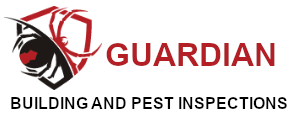Frequently asked Questions
Termites may seem like innocuous, tiny insects, but they can pose a significant threat to homes and other structures if left unchecked. These wood-eating pests burrow into the very foundations of buildings, silently and systematically consuming the material that holds everything together. As they tunnel through beams, joists, and support columns, termites can compromise the structural integrity of a home, putting the safety and security of the occupants at risk. Worse yet, termite infestations are notoriously difficult to detect, as the creatures often work behind walls and under floorboards, leaving little visible evidence of their destructive presence. Homeowners may be blissfully unaware of a growing termite problem until major damage has already been done, requiring extensive and costly repairs. Beyond the threat to the physical structure, termites can also jeopardize the financial wellbeing of a household, as the expense of treating and remediating an infestation can easily run into the thousands or even tens of thousands of dollars. For these reasons, it is critical that homeowners remain vigilant, regularly inspecting for signs of termite activity and taking proactive steps to prevent an infestation from taking hold in the first place. By addressing termite concerns promptly and thoroughly, families can safeguard their most valuable asset – their home – and avoid the headache and heartbreak of dealing with these wood-devouring pests.
Termite infestations are frequently discovered during summer particularly in November and December, due to a combination of environmental factors and the natural life cycle of these wood-consuming pests. As the weather begins to get hotter and the days grow shorter, termites are prompted to engage in their annual swarming behavior, which is a critical phase of their reproductive process.
Determining if your home has a termite infestation can be a tricky task, as these pests are skilled at hiding and often go undetected for long periods. However, there are several key signs to look out for that can indicate the presence of these destructive insects. One of the most obvious signs is the appearance of mud tubes, which termites construct to travel from their nests to food sources. These tubes, which are typically about the width of a pencil, can often be found on the exterior of a home, running along the foundation or up the sides of the building. Another telltale sign is the presence of discarded wings, which termites shed after establishing a new colony. Piles of these translucent wings near windows or doors may signal an active infestation. Additionally, homeowners should be on the lookout for any wood that sounds hollow when tapped, as termites can silently burrow through structural beams and support boards from the inside out.
Investing in professional termite control services is a wise decision that can save you from significant financial and structural headaches down the line. Termites are highly destructive pests that can silently eat away at the very foundations of a home, causing thousands of dollars in damage before the problem is even detected. A qualified termite control company will conduct a thorough inspection to identify any existing infestations or vulnerable entry points, and then implement a customized treatment plan to eliminate the termites and protect your home.
The longevity of a termite treatment can vary significantly depending on a number of key factors. The specific type of treatment method used is a primary determinant, as some approaches are designed for longer-lasting protection than others. Liquid termiticides, for instance, are typically effective for anywhere from 5 to 10 years, creating a chemical barrier that prevents termites from entering the treated area of a home. In contrast, termite baiting systems work more gradually, continuously monitoring for termite activity and deploying small doses of slow-acting pesticide as needed, potentially lasting 10 years or more.
